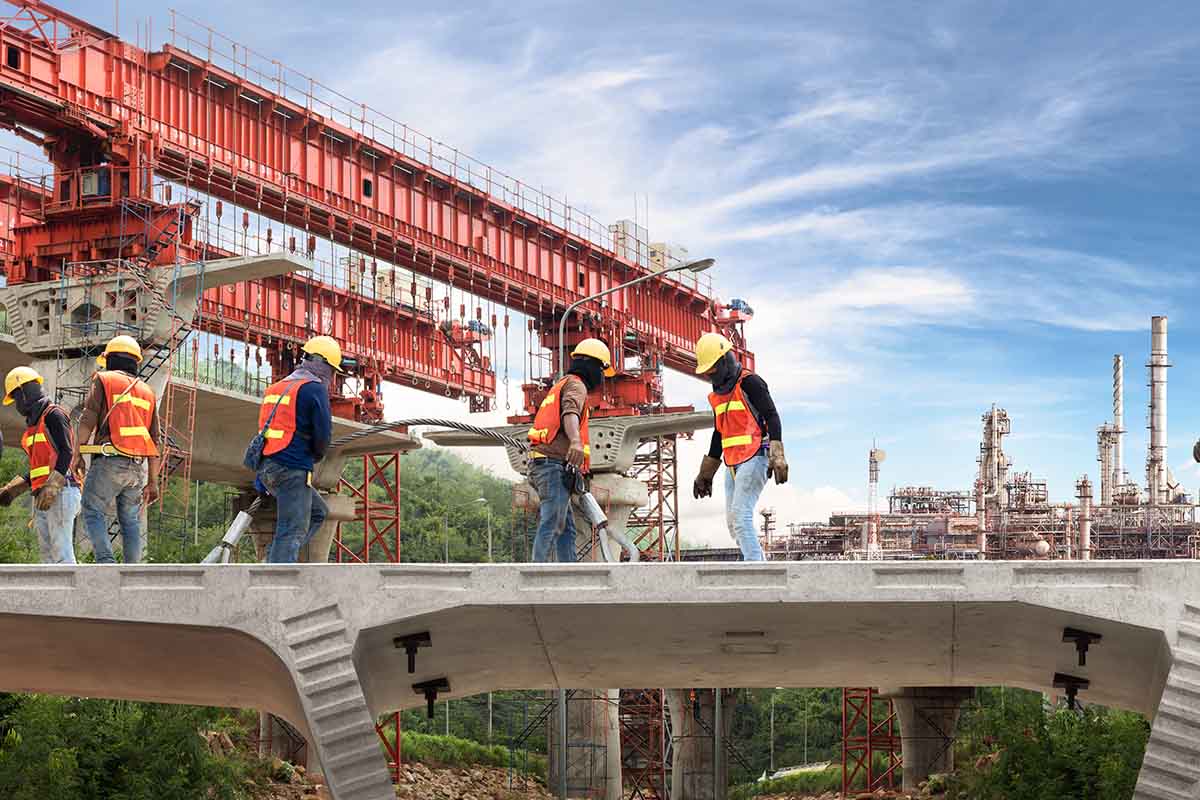KEY POINTS
- Civil engineering projects, like bridges and transportation networks, are key drivers of economic development, enhancing commerce and connectivity.
- Infrastructure projects contribute to job creation, boost property values, and support community development, fostering local and national economic growth.
- Sustainable civil engineering practices are essential for building resilient, green infrastructure that addresses environmental challenges and supports global economies.
The towering structures that stretch across urban skylines and the intricate systems below the ground might not be the first things that come to mind when considering economic growth. However, civil engineering projects are the unsung heroes of economic development — the bridges, water systems, and transportation networks that are the literal and figurative ‘crossroads’ for commerce, growth, and regional connections.
Civil engineering is a field that combines technical skills, innovation, and a deep understanding of society’s needs. It shapes the economic landscape. From improving infrastructure to creating sustainable solutions, Charles Jason Jacob closely examines how civil engineering projects drive economic growth.
Nurturing National Infrastructure
The United States boasts a rich tapestry of engineering marvels, from the iconic Golden Gate Bridge to the subway systems of New York.
However, the nation as a whole is grappling with a sobering reality—an infrastructure that is showing its age. Bridges, highways, and airports need maintenance and modernization as they struggle to keep up with the demands of a growing populace and an evolving economy.
Relevance in a Rapidly Changing World
In an era where supply chains stretch across continents and ‘just-in-time’ practices reign supreme, the need for reliable and efficient infrastructure has never been more acute.
The advent of smart technologies and green initiatives like high-speed rail and sustainable energy sources presents both a challenge and an opportunity for civil engineers.
Reimagining the Modern Metropolis
Metropolitan areas are the beating hearts of national economies, and the blueprint for their success lies in technological advancement and sustainable design.
Civil engineers are tasked with transforming these concrete jungles into smart cities that run like clockwork, reducing congestion, consumption, and environmental impact.
The Lifelines of Local Economies
Civil projects don’t just connect cities—they create economic lifelines for regions and local communities.
Highway construction can open new markets for rural businesses, while a water treatment facility can lay the foundations for industrial expansion. Each project is a brick in the wall of economic growth, each overpass a gateway to new opportunities.
Job Creation and Maintenance
The direct impact of civil projects on employment is substantial. The construction phase alone often employs thousands of workers, while the subsequent maintenance and operation provide long-term, stable employment.
According to a study by the American Society of Civil Engineers, infrastructure construction can create up to 18,000 jobs for every $1 billion in federal funding.
Property Value and Community Development
A new bridge, a well-designed public space, or a state-of-the-art public transit system can turn overlooked neighborhoods into prime real estate. Well-executed infrastructure projects have a ripple effect on the local economy, spurring new development, improving quality of life, and increasing property values.
Cultivating Global Economies
The significance of civil engineering is magnified on a global scale. Seaports, airports, and transnational highways aren’t just the means for international travel and trade but symbols of interconnected global economies.
The Panama Canal, for instance, continues to be a linchpin for trade, reflecting the critical role of engineering in fostering globalization.
The Gateway to Global Trade
Modern ports and intermodal systems are the arteries through which the lifeblood of the global economy — trade- flows. They enable the movement of goods and services, connecting markets and reducing barriers. Ports like Singapore, which serves over 600 shipping lines, are a testament to the integral nature of infrastructure in global commerce.
Developing Nations and Infrastructural Leapfrogging
In developing economies, the impact of robust infrastructure is often more dramatic, as it can potentially transform societies and bring them into the global economic fold. This leapfrog effect was observed in countries like South Korea and China, which swiftly ascended the economic ladder largely due to strategic investments in infrastructure.
The Environmental Dimension
In an age when climate change looms large, infrastructure projects must be reimagined with an eye toward sustainability. Civil engineers are in front of the challenge, tasked with mitigating environmental impact and harnessing green technologies to build resilient structures.
Green Design and Renewable Energy
Integrating renewable energy sources into infrastructure is a burgeoning frontier for civil engineering. Projects such as the London Array, one of the world’s largest offshore wind farms, demonstrate the vital role of engineers in redefining the relationship between infrastructure and the environment.
Adaptation and Resilience
The rising frequency of extreme weather events necessitates efficient and resilient infrastructure. Civil engineers are developing innovative solutions such as flood-resistant buildings, smart levees, and green roofs to combat the challenges of a changing planet.
Final Thoughts
Charles Jason Jacob knows that building bridges is more relevant than ever in this era of rapid urbanization. Civil engineering shows the physical structures that move people and goods and the economic and societal fabric they knit together.
It is a testament to the far-reaching impact of this field that the literal connections it creates have such profound implications for economic connections. The future is under construction, and civil engineering is leading the way.




















